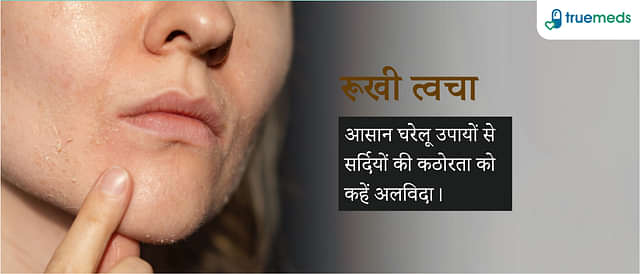What are the Common Warning Signs Before a Stroke?
Last updated on : 26 Mar, 2025
Read time : 5 min
A stroke is a neurological disorder marked by the blockage of blood vessels that supply blood and oxygen to the brain. In terms of mortality, it is the second leading cause of death and a significant contributor to disability worldwide. It occurs due to clots formation in the brain that interrupts blood flow, clogs arteries and causes blood vessels to break, leading to bleeding. Rupture of the arteries during Stroke leads to the sudden death of brain cells. As a result, one may end up in a coma, paralysis, and death. It can even lead to depression and dementia.
The considerable risk factors for Stroke include hypertension, diabetes, physical inactivity, alcohol and drug abuse, cholesterol, unhealthy diet and genetics. To lower your risk of Stroke, maintain a healthy lifestyle and take medications for these other medical conditions.
It is highly prevalent in developing countries. It affects approximately 13.7 million people and kills around 5.5 million per year. In India, it is the fourth major cause of death and disability. With rising deaths due to Stroke, it is becoming a severe health threat that needs to be addressed. Stroke can be avoided by being aware of its alarming signs and providing timely treatment. Before we know Stroke signs and symptoms, let’s discuss the severity of strokes.
What are Stroke signs and symptoms in men and women?
When your brain does not get enough blood flow, your body shows unusual signs and symptoms. The severity of the neurological symptoms depends on what part of the brain is involved.
The Stroke signs and symptoms include:
1. Numbness in your face, arm, or leg
A person experiencing a stroke feels a sudden numbness or tingling sensation in their limbs. They experience drooping on one side or asymmetry in the face. Some also experience weakness or difficulty moving the affected limbs.
2. Confusion
Stroke also affects the brain’s language centres, leading to confusion. They are unable to recognise words. They also experience disorientation about where they are or what is happening.
3. Difficulty speaking
People with stroke experience difficulty speaking or finding the right words. Their speech is slurred, and they cannot pronounce the right words to express themselves. Some stroke patients repeat the exact words or phrases repeatedly, while others experience an inability to speak at all.
4. Trouble seeing with one or both eyes
People with stroke may also experience blurred vision or vision loss in either or both eyes. They cannot focus on objects—some experience seeing two images instead of one, while others experience visual hallucinations.
5. Problems walking
People with a stroke can experience paralysis on either side of the body, making walking difficult. Their muscles become stiff, so they cannot balance and move. Some experience foot drop, a condition in which the toes drag on the ground while walking
6. Dizziness
Dizziness is another common symptom experienced in stroke. A stroke makes you feel like you’re going to faint. You can also experience nausea or vomiting with dizziness. Some experience a spinning sensation in the ear called vertigo.
7. Severe headache
A sudden, severe headache without warning is a common neurological symptom experienced in stroke. A person can also experience light sensitivity with headaches.
What should you do when you notice stroke signs and symptoms?
Time is the most crucial factor if you experience Stroke signs and symptoms. The faster you can get to a hospital after the first symptom, the better your chances of recovery. Neurological treatment works best when the Stroke is identified and diagnosed within 3 hours of the first symptoms. It is because the tissue plasminogen activator, a medicine that dissolves blood clots, should be given at the earliest. This medication is only effective during the first few hours after a stroke. After that, it is no longer effective. Therefore, it is imperative to record the exact time that you or someone around you first noticed symptoms and the time that you were last well without symptoms.
Do not wait for your symptoms to improve; immediately call for urgent medical help if you have any of the above warning signs.
If you think someone is experiencing Stroke, remember the acronym F.A.S.T. and immediately start noticing these activities of the body parts:
Face: One side of the face drops on smiling.
Arms: One arm drifts downwards on raising both arms.
Speech: The speech is unclear or slurred on repeating a simple sentence.
Time: Without wasting time, call 102/108 for medical help.
How to prepare yourself for stroke signs and symptoms?
You can prepare yourself to reduce the severity of stroke signs and symptoms by knowing the following:
- Maintaining a record of all your medications, allergies, and medical conditions in your phone or a file. It will be a lot of help in a stroke or another medical emergency.
- Find the nearest hospital that can provide stroke care and keep the phone number handy.
- Keep yourself updated with the latest information and treatment on Stroke, and speak to your doctor about your risk factors and any concerns you may have.
- Make your family and friends aware of “FAST”.
- Teach your children how to call for medical help.
Disclaimer: The information given in this article is true to our best knowledge. Still, we recommend you consult your doctor to guide you through the warning signs and risk factors for a stroke.
References
Disclaimer
Our healthcare experts have carefully reviewed and compiled the information presented here to ensure accuracy and trustworthiness. It is important to note that this information serves as a general overview of the topic and is for informational purposes only. It is not intended to diagnose, prevent, or cure any health problem. This page does not establish a doctor-patient relationship, nor does it replace the advice or consultation of a registered medical practitioner. We recommend seeking guidance from your registered medical practitioner for any questions or concerns regarding your medical condition.
Popular Articles
Recommended Articles
Recent Articles
Top-Selling Medicines:
...View more
Top-Selling OTC:
...View more
Subscribe
Registered Office Address
Grievance Officer
Download Truemeds

Contact Us
Our customer representative team is available 7 days a week from 9 am - 9 pm.
v3.7.5
Our Payment Partners


























































